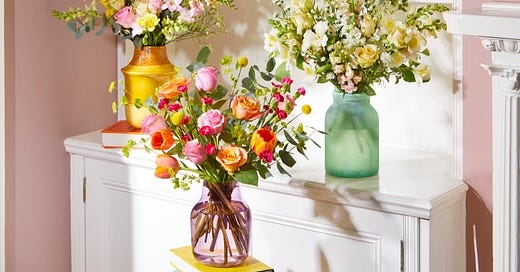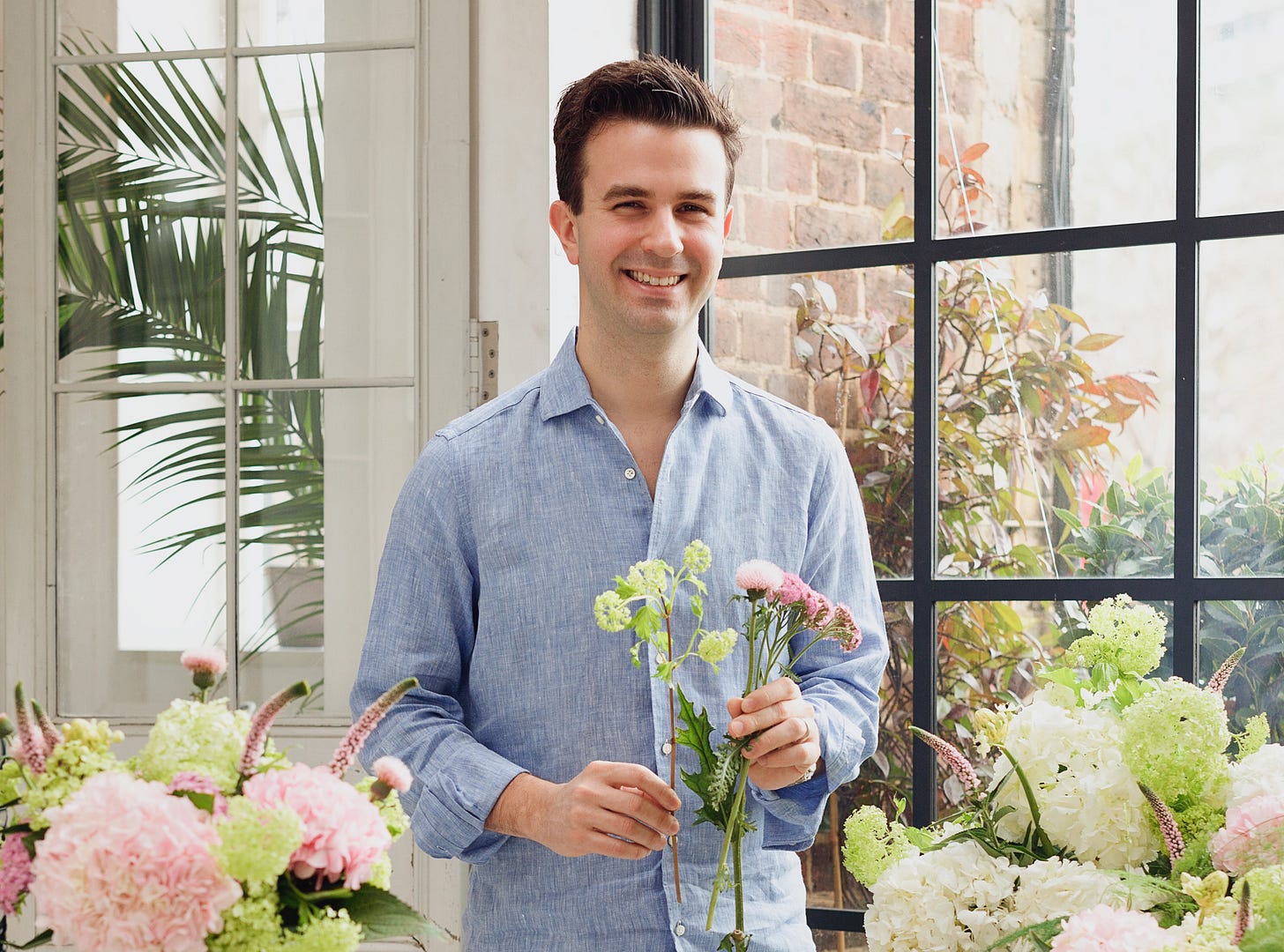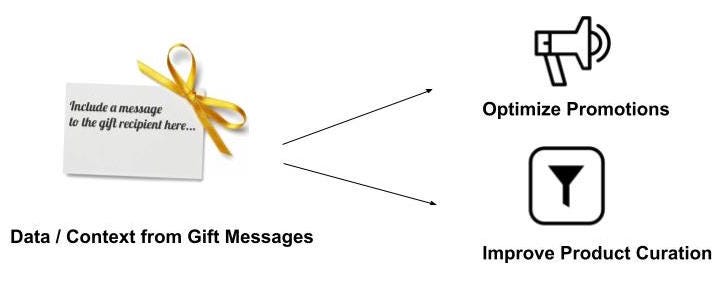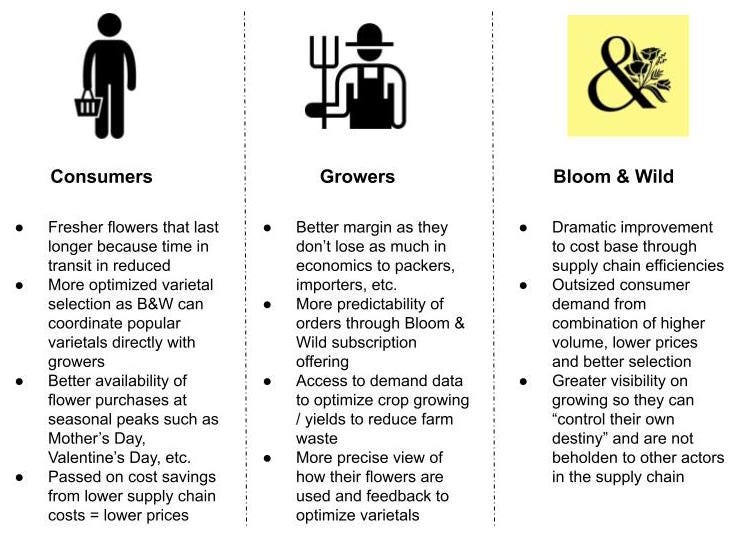Stop and Smell the Innovation
How Bloom & Wild Used the Mail Slot to Change Flower Delivery Forever
Welcome back to The Innovation Armory! Today I’m experimenting with a new format for the newsletter consisting of a podcast plus a snapshot of some of my key learnings / takeaways from my conversation with a founder. You can find future episodes going forward on your preferred podcast channel including: Spotify, Google Podcasts, Castbox and Breaker. The name of the podcast show is “The Innovation Armory”.
My goal with this content format is to make it easier to digest The Innovation Armory for those of you who like consuming your content on the go and to also give you more direct access to insights from my discussions with founders. Excuse some of the background noise you might hear in this one.
Today’s conversation is with Aron Gelbard, CEO & Co-Founder of Bloom & Wild, the leading online direct-to-consumer flower delivery company across the UK and Europe. His team recently raised a $102 million Series D round from General Catalyst to continue expanding across the continent. Bloom & Wild also recently acquired bloomon, a digital flower delivery company based in the Netherlands. Aron and his team have a very unique approach to the flower delivery space that leverages innovations in supply chain, business process, branding and consumer interface to drive an outsized advantage vs. competitors. I hope you enjoy this discussion!
For those who want to shape the direction of future podcast episodes: I am also trying to decide on a couple of personal questions to ask each founder at the end of each podcast episode. I’m experimenting with which to ask and would welcome any suggestions from you all. You can reach out to sam@theinnovationarmory.com with any suggestions. My initial set I’m starting off with is:
Tell me about a time you had a 1st impression that was wrong
What is the most borderline conspiracy theory belief you have strong conviction in?
How would you describe your high school self?
The next podcast episode will be with Uri Marchand, CEO & Founder of Overwolf. Overwolf is a leading platform for creative developers to build, distribute and monetize mods for video games. Overwolf recently raised $52.5 million from Insight Partners and Griffin Gaming Partners. Subscribe below for future updates:
If you liked this podcast / piece, I’d appreciate if you shared with the link below. You can also follow me on Twitter @SamNatbony for more insights.
Stop And Smell the Innovation (Podcast Audio)
You can also listen directly on Spotify, Google Podcasts, Castbox or Breaker at these links!
My Takeaways from My Conversation with Aron
I learned a lot from my conversation with Aron, but wanted to highlight my key takeaways for the group. There’s a lot more detail packed into the podcast so if you’re skipping to this section, I encourage you to listen for more incredible insights from Aron!
Observing & Exporting B2B Processes to the Consumer World to Drive Differentiation
One of Bloom & Wild’s primary process innovations was the concept that a Company could delivery smaller sets of flowers in a flat box through mail slots rather than delivering massive pre-arranged bouquets that customers needed to be present to accept.
This innovation came from observing the B2B processes already present within the supply chain. Most people probably don’t know that often flowers are shipped from afar before they get your local florists vs. being grown locally. Already as part of this multi-stepped supply chain, flowers were packed into flat boxes during transportation to reduce shipping costs further up the supply chain. Aron and his team observed this and came up with the idea of downsizing the box to mail slot size after coming across a business called graze delivering snacks through mailboxes. Consumers receive un-arranged flowers in a smaller mailslot box that they unpack and arrange on their own.
This business process innovation has created multiple competitive advantages for Bloom & Wild both on the cost and on the revenue side:
I think it’s fascinating that this innovation came from observing an innovation chosen for cost reasons on the B2B side. Often there is a trade-off between these cost-cutting measures and impacts to customer engagement, virality potential and growth. The exporting of this cost-cutting measure for Bloom & Wild created revenue benefits that are are arguably even stronger than the benefits on the cost reduction side. What are other industries or existing businesses that do already or could capitalize on a similar dynamic? Here’s another one that comes to mind for me in the grocery space:
Misfits Market - Allows consumers to purchase imperfect / blemished fresh produce goods at a steep discount. The founders saw that often this funky (but still tasty!) produce was not even purchased by grocers from growers because it would sit on their shelves, generally not sell and eat into margins. Observing this cost optimization decision by grocers, Misfits Market created a marketplace that has a cost advantage from buying these goods at a discount. Of course, in a grocery store when you have a choice of buying a properly formed or misshapen eggplant for the same price, you will go with the former. But, Misfits Market has the ability to be more granular with pricing and present the misfit produce through a more fun, digital first format. This allows it to generate a revenue advantage through greater volume by offering tiered pricing to generate more transaction velocity. Plus, the strange shapes of the fruits / vegetables are odd-looking enough to make good social media content and increase virality!
The Power of “Gift Giving” Consumer Categories
Consumer goods categories with use cases primarily in giving gifts to others benefit from numerous structural growth accelerators around marketing:
Embedded Marketing Opportunity - each consumer purchase that is made has an embedded marketing opportunity where effectively the gift giver is subsidizing the customer acquisition cost of the gift receiver. If the gift receiver is delighted by their gift, there is a chance they will gift flowers in the future through Bloom & Wild’s platform. The more a consumer company can personalize the gift to the particular occasion, the more likely it is they can convert the receiver as a future customer of the business. The embedded marketing opportunity is even greater when you consider that most gift receivers are more likely to share their gifts on their social media channels than other purchases. Therefore, gift giving consumer business can structurally realize lower effective CACs than other consumer categories
Gift Messaging Optimizes Promotional Strategy - Gifts are normally given with a note indicating the anniversary and other facts about the special occasion. This context offered by the customer provides value data to feed AI algorithms to optimize both promotional strategies and product development. Relative to other consumer categories, this user-offered context structurally provides more data on the end use case for the product and how it evolves over time. For Bloom & Wild, this allows it to be smarter with when / how it promotes particular products and how to best group flower varietals to drive more sales volume around particular gifting occasions.
3. Willingness to Engage with Marketing - how often have you forgotten an anniversary or a birthday in the past? Has that gotten you in trouble with your partner, family or friends? This just happened to me with a friend last week:
I ignore a lot of the promotional emails I receive from brands, retailers, etc. What’s interesting about targeted promotion about a gift though is that it actually serves a functional purpose of reminding someone about a special occasion. I’d love it if Bloom & Wild remembers from the year before that it’s an anniversary and serves me a targeted ad the week before to both remind me of the occasion and easily pre-order a gift with one click. We all live busy lives and forgetting occasions is a big problem for professionals. This type of marketing promotion is much better received than spam promotions that lack a functional purpose besides getting you to buy.
Driving Towards Vertical Integration
The best consumer brands of this decade will continue to vertically integrate supply chains to drive a more direct connection between producers / creators and consumers. The traditional flower supply chain is highly complex and legacy players like FTD and 1-800-Flowers take steps 1-6 of the supply chain as a given and only focus on connecting florists with consumers. Bloom & Wild is differentiated by its ability to leverage vertical integration to re-write earlier steps in the supply chain to create more value for growers, consumers and itself:
The efficiencies for the growers, consumers and Bloom & Wild of this approach are numerous. Here are a couple of the most prominent benefits:
All Innovation Armory publications and the views and opinions expressed at, or through, this site belong solely to the blog owner and his guests and do not represent those of people, employers, institutions or organizations that the owner may or may not be associated with in a professional or personal capacity. All liability with respect to the actions taken or not taken based on the contents of this site are hereby expressly disclaimed. These publications are the blog owners’ personal opinions and are not meant to be relied upon as a basis for investment decisions.










